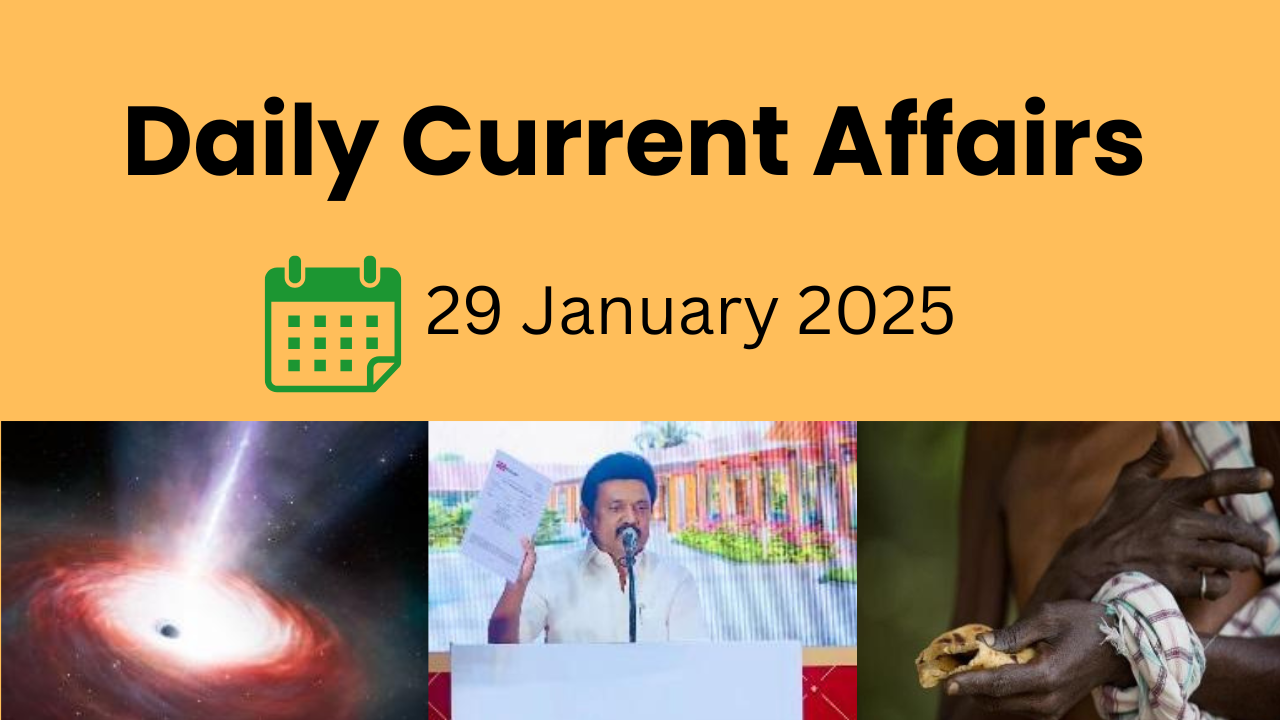1. Is France’s Influence in West Africa Coming to an End?
Context: In recent developments, Chad, Ivory Coast, and Senegal have called for the withdrawal of French troops from their territories. This marks a potential turning point in France’s historical influence over its former colonies in West Africa, raising questions about the future of the region’s political landscape.
Why Are These Countries Requesting the Withdrawal?
- National Sovereignty: A Call for Autonomy: Since gaining independence, many West African countries have grappled with the heavy presence of French influence, particularly through colonial pacts such as ‘Francafrique’. France’s military footprint, including Operation Barkhane, has been prominent in Senegal and Ivory Coast since 2014, and Chad’s defense pact has lasted for decades. However, many view this continued military presence as a challenge to their national sovereignty, calling for a reevaluation of these longstanding ties.
- Public Frustration with French Military Efforts: Despite French military involvement aimed at curbing insurgent groups aligned with Al-Qaeda and the Islamic State (ISIS), instability in the region has persisted. Public sentiment has soured, with increasing frustration toward the French forces and their failure to stabilize the situation. This has led to growing anti-French sentiments among the local populations.
- Shifting Alliances and the Influence of Russia: Countries in the region, including Mali and Niger, have begun to seek alternative forms of support, notably from Russian mercenaries. These new alliances, characterized by security assistance without the “baggage” of democratic values associated with Western powers, are seen as a possible shift away from traditional French influence.
Implications for West African Countries:
- The End of France’s Longstanding Influence: Should French troops withdraw, the resulting political vacuum could drastically shift the power dynamics in the region. Countries that have long relied on France for military and economic support may now look to forge new regional or global alliances to secure their futures.
- Continued Instability Despite New Alliances: While countries like Mali, Niger, and Burkina Faso are turning to Russian mercenaries, their success in quelling insurgencies has been limited. Military-led governments in these nations, despite their alignment with Russia, have yet to effectively stabilize the region, showing that the solution may not lie in simply replacing one foreign influence with another.
- Formation of New Alliances in the Sahel: With French departure, countries like Chad, Senegal, and Ivory Coast could find themselves aligning with the Alliance of Sahel—a coalition of military-led governments in the region. This could bring about a new regional bloc of nations focused on security, though their ability to maintain stability remains uncertain.
Geographic Overview of Key Countries Involved:
- Chad: A landlocked country bordered by Libya, Sudan, Central African Republic, Cameroon, Nigeria, and Niger. Its capital is N’Djamena.
- Senegal: Located on the Atlantic Ocean, it shares borders with Mauritania, Mali, Guinea, and Guinea-Bissau. Its capital is Dakar.
- Ivory Coast (Côte d’Ivoire): Situated along the Gulf of Guinea, bordered by Mali, Burkina Faso, Ghana, Liberia, and Guinea.
Conclusion: A New Era for West Africa?
The request for French troop withdrawals signals a fundamental shift in West Africa’s geopolitics. With countries seeking greater autonomy and forming new alliances, the future of France’s influence in the region hangs in the balance. As local populations demand more control over their affairs, the next chapter in West African politics could be defined by shifting allegiances and the rise of new power centers.
2. Unspent 70,744-Crore Fund for Workers’ Welfare: A Missed Opportunity
Context: In a recent Right to Information (RTI) response, the Union Labour Ministry revealed a concerning statistic: State welfare boards for building and other construction workers have not yet utilized a staggering 70,744.16 crore of the cess collected from employers. These funds, meant for the welfare of construction workers, have remained largely untapped.
Understanding the Building and Other Construction Workers (BOCW) Act, 1996
Purpose of the Act:
The BOCW Act was designed to regulate the employment, working conditions, and overall welfare of construction workers. The law mandates the establishment of Construction Workers’ Welfare Boards by State governments, which are tasked with implementing various welfare initiatives.
Cess Collection for Worker Welfare:
Under the BOCW Act, welfare boards are authorized to impose a cess ranging from 1% to 2% of the construction costs incurred by employers. This cess is crucial for funding essential welfare measures, including:
- Temporary accommodation
- Drinking water and sanitation
- Social security benefits for workers
Who Can Benefit?
Workers aged between 18 and 60 years, engaged in construction activities for at least 90 days in the last year, are eligible for registration with State Welfare Boards as beneficiaries.
Current State of Cess Collection and Usage
Funds Collected: A Staggering 1.17 Lakh Crore
Since 2005, a total of 1,17,507.22 crore has been collected as cess from construction employers across India. However, a significant portion of these funds remains unutilized:
- 67,669.92 crore has been allocated to workers, but a massive 70,744.16 crore remains unused.
Key Issues in Implementation
Underutilization of Funds
Despite the vast amounts of cess collected, only a fraction has been put to use, leaving workers without the statutory benefits they are entitled to.
Cess Evasion:
There are growing concerns about cess evasion, with allegations suggesting that builders and employers are underreporting construction costs, resulting in a significant shortfall in collected cess.
- Example: In Maharashtra, estimates suggest construction worth 1 lakh crore annually, yet the reported cess collection is far lower, indicating possible evasion.
Failure to Support Workers During COVID-19
The COVID-19 lockdowns in 2020 exposed a glaring flaw in the welfare system, as millions of construction workers were left stranded. The lack of adequate support during this crisis highlighted the ineffectiveness of both State and Central governments in utilizing the collected funds for the workers’ welfare.
Conclusion: Time for Action
With over 70,000 crore lying unused, it’s imperative for State governments to act swiftly in utilizing these funds for the benefit of construction workers. The funds are meant to provide essential support to workers who have long been neglected, and it’s high time they received the welfare benefits they are rightfully owed.
3. Is Poverty in India Being Underestimated
Context: In recent months, the Indian government released the 2023-24 Household Consumption Expenditure Survey (HCES), which indicated a decline in poverty levels across both urban and rural areas. While the report paints a hopeful picture, policymakers and academics have raised concerns about incomparable data, data unavailability, and the very definition of an adequate consumption basket used to determine the poverty line.
Poverty Estimation in India: The Evolving Methodologies
India has undergone several revisions in how it measures poverty. Over the years, various committees have offered new approaches to ensure more accurate estimations:
Y.K. Alagh Committee (1979):
- Methodology: Defined the poverty line based on minimum calorie intake requirements for both rural and urban areas.
Lakdawala Committee (1993):
- Methodology: Introduced state-specific poverty lines and price indices to estimate poverty, considering regional disparities.
Tendulkar Committee (2009):
- Shift in Focus: Moved beyond calorie consumption and broadened its focus to spending patterns.
- Methodology: Introduced the Mixed Reference Period (MRP), considering both food and non-food expenditures.
Rangarajan Committee (2014):
- New Poverty Line: Proposed higher thresholds for poverty estimation.
- Methodology: Modified consumption baskets to better reflect rising living standards and the realities of the Indian economy.
Multidimensional Poverty Index (2021):
- Launched by NITI Aayog: It moved beyond income-based poverty lines and included 12 indicators like access to bank accounts and maternal health.
- Improvement in Methodology: The URP (Uniform Reference Period) evolved into MRP and eventually into MMRP to better capture expenditure habits.
Recent Developments: A Shift Towards More Accurate Data
To enhance the accuracy of poverty estimations, the National Sample Survey Office (NSSO) has started conducting multiple household sittings, which allows respondents to recall their expenditures more accurately. This improvement has led to better data reliability and has sparked optimism about more informed poverty policies in the future.
Decline in Poverty: A Glimpse into the Latest Statistics
The 2023-24 HCES factsheet has reported a sharp decline in poverty, with estimates showing a reduction of 17-18% in poverty levels since 2011-12. Some estimates for 2022-23 put poverty levels at around 10% using the Rangarajan line. This decline is attributed to several factors:
- High GDP growth
- Flagship government programs
- Improved public delivery systems
Key interventions like the National Food Security Act have played a pivotal role in ensuring sustained low poverty levels.
Urban vs. Rural Poverty: Shifting Dynamics
One of the key findings of the HCES is the narrowing gap between rural and urban consumption patterns. Rural areas are showing more diversified consumption trends, signaling progress in addressing rural poverty. However, the classification of rural areas is based on 2011 Census data, which may not fully capture the urbanization trends, as many rural areas today are more urban or peri-urban in nature.
Conclusion: Are the Numbers Truly Reflective of Poverty in India?
While the decline in poverty levels reported by the 2023-24 HCES is encouraging, there remain concerns about whether poverty is being underestimated in India. Data gaps, methodology limitations, and the evolving nature of urbanization suggest that a more nuanced approach is required to truly understand the complexities of poverty in India.
4. India’s Rice Exports: Resilience Amidst 2024 Export Restrictions
Context: In 2024, India’s rice exports have shown remarkable resilience despite facing temporary curbs earlier in the year. The surge in premium basmati rice shipments effectively balanced the drop in non-basmati rice exports, allowing India to retain its status as the world’s largest rice exporter.
India, which accounts for more than 40% of global rice exports, had imposed restrictions on rice shipments in 2023 to address domestic price rises and ensure food security. After lifting the curbs in September-October 2024, exports rebounded, ending the year on a positive note.
Key Highlights of Rice Exports in 2024:
- Total Exports: India exported 17.8 million metric tonnes (MMT) of rice in 2024, slightly lower than 2023’s 17.86 MMT, demonstrating strong but slightly reduced exports.
- Basmati Rice Exports: Basmati rice exports soared by 16.3%, reaching a record 5.7 MMT.
Major Buyers: Saudi Arabia, Iraq, and the UAE contributed significantly to this growth. - Non-Basmati Rice Exports: Exports of non-basmati rice declined by 6.9% to 12.1 MMT.
Countries like Bangladesh, Cameroon, Djibouti, and Gambia reduced their imports, primarily due to high prices.
Lifting of Export Restrictions: A Turning Point
India lifted most restrictions on both non-basmati and premium basmati rice in September-October 2024, allowing rice exports to recover strongly in the final quarter of the year.
Impact on Global Rice Markets:
- Global Price Stabilization: India’s continued rice exports helped stabilize global rice prices, which had spiked during the restrictions.
- Reduction of Domestic Surplus: By exporting more, India was able to reduce its record-high domestic rice stockpile from an excellent harvest, helping prevent oversupply in the local market.
India’s Strong Domestic Rice Production:
India’s bumper rice harvest ensured sufficient rice availability for both domestic needs and global markets. Despite the temporary curbs, the government managed to balance food security concerns with export demands, showcasing its strategic handling of rice exports.
Why Were Export Restrictions Imposed in the First Place?
- Domestic Food Security: Restrictions were primarily imposed to ensure enough rice remained in the country for food security, especially amidst rising domestic prices.
- Rising Domestic Prices: The government had to control rising rice prices and ensure that domestic availability was prioritized.
- Monsoon Uncertainty: The uncertainty surrounding the monsoon season also prompted caution in rice exports to ensure adequate stock for the country’s needs.
Global and Domestic Significance of India’s Rice Export Performance:
- Global Impact: India’s continued rice shipments helped stabilize global rice markets, providing much-needed relief to import-dependent countries, even as rice prices remained high.
- India’s Dominance: India maintained its dominance in the global rice market, with record basmati shipments strengthening its ties with important trading partners in the Middle East.
Conclusion: India’s Resilient Export Story
India’s ability to weather export restrictions and maintain strong rice export performance in 2024 highlights its resilience in navigating complex global and domestic challenges. The country’s proactive policies and its surplus rice production have ensured that it continues to be a key player in global food security.
5. LID-568: A Black Hole That Defies Astrophysical Norms
Context: A team of international researchers using NASA’s James Webb Space Telescope (JWST) and the Chandra X-ray Observatory has uncovered an extraordinary black hole known as LID-568. This discovery challenges established astrophysical theories and provides groundbreaking insights into the formation and rapid growth of supermassive black holes.
What is LID-568?
LID-568 is a low-mass supermassive black hole that existed just 5 billion years after the Big Bang. Discovered through complementary observations from JWST and Chandra, this black hole is feeding on surrounding matter at a rate that far exceeds the established theoretical limit known as the Eddington limit—by nearly 40 times.
This unusual behavior suggests a faster growth mechanism for black holes than previously thought possible, pushing LID-568 into the category of super-Eddington accretion.
What is the Eddington Limit?
The Eddington limit, named after Sir Arthur Eddington, represents the theoretical maximum luminosity a star or accretion disk can achieve. At this limit, the outward radiation pressure from the object balances the inward gravitational force, preventing the further accretion of matter.
If an object exceeds this limit, it generates excessive radiation pressure, which could potentially blow away the outer layers of the star or accretion disk, ensuring a self-regulating mechanism to maintain stability.
Super-Eddington Accretion: A New Frontier
When an object, such as a black hole, exceeds the Eddington limit and accretes matter at an unprecedented rate, it is said to be in a super-Eddington accretion phase. In this state, the object emits more luminosity than the theoretical Eddington limit, challenging the traditional models of radiation pressure balance.
The discovery of LID-568 demonstrates super-Eddington accretion at a level previously thought impossible. At just 1.5 billion years after the Big Bang, LID-568 was consuming material at over 40 times the Eddington limit, offering a glimpse into how supermassive black holes grew rapidly in the early universe.
Key Concepts of Black Holes:
- Black Holes: A black hole is a region in space where gravity is so intense that even light cannot escape. They typically form when massive stars collapse under their own gravity after exhausting their nuclear fuel.
- Event Horizon: The event horizon marks the boundary of a black hole. Once matter or light crosses this threshold, it cannot escape and is inevitably pulled towards the singularity.
- Singularity: At the core of a black hole lies the singularity, a point where the gravitational force is infinite, and the laws of physics break down.
- Accretion Disk: An accretion disk is a disk-like structure formed by gas and dust spiraling into the black hole. The material heats up due to friction, emitting radiation that can be detected in X-rays.
- Spaghettification: As objects approach a black hole, they experience extreme tidal forces that stretch and elongate them, a phenomenon known as spaghettification.
- Supermassive Black Holes: These black holes, like Sagittarius A* at the center of the Milky Way, can grow to billions of times the mass of the Sun.
The Role of the Chandra X-ray Observatory:
The Chandra X-ray Observatory played a crucial role in identifying LID-568, detecting its exceptional brightness in X-rays, even though it was invisible in optical and near-infrared wavelengths. The black hole’s remarkable X-ray emissions provided key insights into its behavior and growth patterns.
Why This Discovery Matters:
The discovery of LID-568 opens up new possibilities in our understanding of black hole growth. It not only challenges the Eddington limit but also sheds light on how supermassive black holes can grow so rapidly in the early universe. As astrophysics continues to explore the mysteries of black holes, discoveries like LID-568 could revolutionize our understanding of the cosmic evolution and the mechanisms driving black hole formation.
6. Tamil Nadu: The Birthplace of the Iron Age – A Groundbreaking Discovery
Context: A groundbreaking study has uncovered that the Iron Age in Tamil Nadu began as early as 3,345 BCE, drastically altering the previously understood timeline of iron usage in the region by over 1,000 years. This new evidence challenges prior historical assumptions and underscores Tamil Nadu’s pivotal role in early metallurgical advancements. The study was authored by K Rajan (Pondicherry University) and R Sivanantham (Tamil Nadu State Department of Archaeology).
Iron Age in India: A Transformative Era
The Iron Age in India marked a period of significant advancement, especially in the use of iron tools and weapons. These innovations played a vital role in the growth of agriculture, warfare, and social structures. Traditionally, the Iron Age was believed to have begun around 1500 to 2000 BCE, but new evidence from Tamil Nadu has revealed iron usage as early as 3345 BCE, pushing the timeline back by more than a millennium.
Technological Breakthroughs: Advancements in Metallurgy
The Iron Age was a leap forward in metallurgy, following the Copper-Bronze Age. Iron smelting required the use of advanced furnaces capable of reaching temperatures as high as 1534°C, showcasing the remarkable technological prowess of the era.
Archaeological Evidence: Key Discoveries in Tamil Nadu
- North India: Iron usage in sites like Hastinapur, Kausambi, and Ujjain is linked to the Painted Grey Ware (PGW) culture.
- Central India and Deccan: Sites like Nagda, Eran, and Prakash reveal evidence of iron-bearing Black and Red Ware (BRW).
- South India: Iron artifacts date back to the Neolithic and Megalithic phases, indicating early iron use in Tamil Nadu.
Iron Age’s Role in Agriculture and Urbanization:
Iron tools, including axes and ploughs, were essential in clearing forests and expanding agricultural activities. This facilitated the second urbanization in the Ganga valley (800-500 BCE), bringing about increased agricultural productivity and urban growth.
Social and Economic Impact of the Iron Age:
The spread of iron technology enabled forest clearance, enhanced agriculture, and led to urbanization, resulting in socio-economic stratification. This era also saw the rise of chiefdoms, states, and the formation of trading networks, laying the foundation for the formation of the Mauryan Empire and the integration of diverse regions.
Key Findings of the Study: Revising the Iron Age Timeline
The report, ‘Antiquity of Iron: Recent Radiometric Dates from Tamil Nadu’, offers conclusive evidence that iron technology in Tamil Nadu dates back to as early as 3345 BCE. Using Accelerator Mass Spectrometry (AMS) and Optically Stimulated Luminescence (OSL) methods, the study redefines the global history of iron metallurgy.
Archaeological Sites Studied: Confirming Early Metallurgical Practices
- Sivagalai: Charcoal and potsherd samples date iron technology to 2953–3345 BCE, with a paddy sample from a burial urn dated to 1155 BCE.
- Mayiladumparai: Samples from this site, dating to 2172 BCE, surpass earlier benchmarks for the region.
- Kilnamandi: The discovery of a sarcophagus burial dating to 1692 BCE is the earliest of its kind in Tamil Nadu.
Tamil Nadu: A Leader in Early Metallurgy
This study positions Tamil Nadu as a pioneer in early metallurgy, with evidence of smelted iron dating back to the middle of the 3rd millennium BCE. The research suggests that the Copper Age in North India and the Iron Age in South India occurred simultaneously, reflecting distinct but parallel cultural trajectories.
Advanced Iron-Smelling Techniques in Tamil Nadu:
Archaeologists identified three distinct iron-smelting furnaces at:
- Kodumanal: Circular furnaces that could reach 1300°C, enough to produce sponge iron.
- Chettipalayam and Perungalur: These sites demonstrated further innovative smelting techniques, highlighting Tamil Nadu’s sophisticated knowledge of pyro-technology.
Significance of the Study: A New Chapter in Indian Archaeology
- Iron Age Timeline Revised: The discovery of radiometric data from Sivagalai places the use of iron in Tamil Nadu as early as 3345 BCE, making it the earliest evidence of iron technology globally.
- Global Implications: This finding challenges the widely accepted Hittite Empire (1300 BCE) as the birthplace of the Iron Age.
- A Turning Point in Archaeology: This discovery marks a monumental shift in the history of Indian archaeology, positioning Tamil Nadu at the forefront of global metallurgical innovation.
This groundbreaking study not only rewrites the history of the Iron Age in India but also elevates Tamil Nadu as a key player in the evolution of metallurgy, offering new insights into the technological advancements of ancient civilizations.




